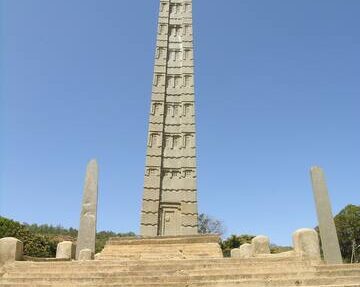
Discover the Architectural Marvels and Rich History of Axum, Ethiopia
Introduction
Axum, a pivotal historical and archaeological site in Ethiopia, beautifully merges ancient heritage with natural splendor. Recognized by UNESCO as a World Heritage Site, Axum's rich past and architectural brilliance draw history enthusiasts and curious travelers alike. This article delves into the remarkable journey of Axum from its days as the Aksumite Empire's heart to its present-day relevance.
The Legendary Aksumite Empire
Early Beginnings
Axum traces its roots back to prehistoric times, with archaeological evidence in regions like Gobadra pointing to early human settlements dating back to the Stone Age. By the 1st century AD, the town was a bustling metropolis, as described in the Periplus of the Erythraean Sea.
Architectural Evolution
One of Axum's standout features is its stelae, or enormous obelisks used to mark graves. Initially unadorned, these monuments evolved into intricately carved structures resembling multi-story towers. The Aksumite architecture showcases a distinctive style characterized by:
Massive granite blocks: Used for constructing imposing edifices.
Mud mortar: Essential for building stability and longevity.
Bricks for vaulting and arches: Highlighting advanced engineering skills.
Wooden framework: Often adorned with "monkey-head" carvings for aesthetic appeal.
These features are not just confined to Axum but echoed in other cities like Adulis and Matara.
Axum's Role in Religion and Politics
Spiritual Significance
Axum holds profound religious significance, being the spiritual capital during the Solomonic Dynasty. It is believed to be the resting place of the Biblical Ark of the Covenant. Important Christian texts were translated into Ge'ez during the 5th and 6th centuries, establishing Axum as a crucial center for religious scholarship.
Political Powerhouse
Although Axum’s political influence waned post-8th century, historical records, including chronicled victories and engraved stone thrones, underscore its former stature. Post-medieval times, Axum regained prominence under leaders like Emperor Sarsa Dengel and Susenyos I.
Cultural and Historical Sites in Axum
UNESCO World Heritage Sites
Northern Stelae Park: Home to some of the tallest obelisks in the world.
Church of Our Lady Mary of Zion: Said to house the Ark of the Covenant, it's an essential pilgrimage site.
Ruins of Dungur: Often referred to as the "Queen of Sheba's Palace."
Economy and Demographics
Axum's economy historically thrived on agriculture, bolstered by its fertile lands and reliable water sources like the May Sum reservoir. Today, the population has grown to approximately 94,515 as of 2022, maintaining a blend of historical preservation and modern development.
Conclusion
The town of Axum offers an unparalleled journey through time with its rich architectural, religious, and historical tapestry. Whether you are a history buff, an archaeology enthusiast, or a traveler in search of unique destinations, Axum stands out as a treasure trove of ancient marvels waiting to be explored.
